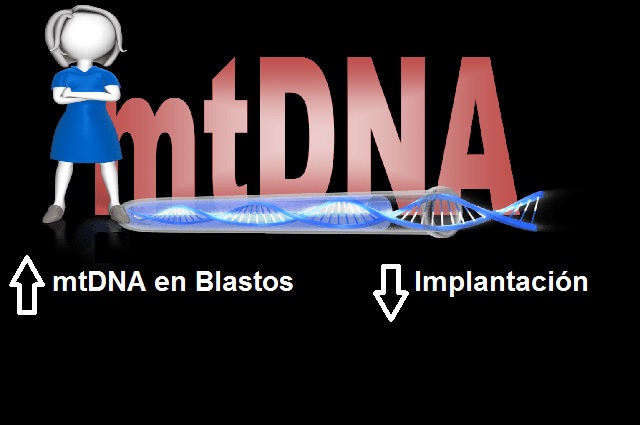
Según el artículo de Elpida Fragouli publicado en Human Reproduction el 11/11/2017
Clinical implications of mitochondrial DNA quantification on pregnancy outcomes: a blinded prospective non-selection study
Can quantification of mitochondrial DNA (mtDNA) in trophectoderm (TE) biopsy samples provide information concerning the viability of a blastocyst, potentially enhancing embryo selection and improving IVF treatment outcomes?
This study demonstrated that euploid blastocysts of good morphology, but with high mtDNA levels had a greatly reduced implantation potential.
Better methods of embryo selection leading to IVF outcome improvement are necessary, as the transfer of chromosomally normal embryos of high morphological grade cannot guarantee the establishment of an ongoing pregnancy. The quantity of mtDNA in embryonic cells has been proposed as a new biomarker of viability—higher levels of mtDNA associated with reduced implantation potential.
mtDNA was quantified in 199 blastocysts, previously biopsied and shown to be chromosomally normal using preimplantation genetic testing for aneuploidy (PGT-A). These were generated by 174 couples (average female age 37.06 years). All patients underwent IVF in a single clinic. The study took place in a blinded, non-selection manner—i.e. mtDNA quantity was not known at the time of single embryo transfer. The fate of the embryos transferred was subsequently compared to the mtDNA levels measured.
Embryos were biopsied at the blastocyst stage. The TE samples obtained were subjected to whole genome amplification followed by comprehensive chromosome analysis via next generation sequencing. The same biopsy specimens were also tested using quantitative PCR, allowing highly accurate mtDNA quantification. After blastocyst transfer, the code used for blinding was broken and analysis undertaken to reveal whether the amount of mtDNA had any association with embryo implantation.
mtDNA analysis of the 199 blastocysts revealed that 9 (5%) contained unusually high levels of mtDNA. All embryo transfers involved a single chromosomally normal blastocyst of good morphology. Of these, 121 (60%) led to ongoing pregnancies, 11(6%) led to biochemical pregnancies, and 10 (5%) spontaneously miscarried. All (100%) of these blastocysts had mtDNA levels considered to be normal/low. The remaining 57 (29%) blastocysts failed to implant. Among these non-viable embryos there were 9 (16%) with unusually high levels of mtDNA. This meant that the ongoing pregnancy rate for morphologically good, euploid blastocysts, with normal/low levels of mtDNA was 64% (121/190). In contrast, the ongoing pregnancy rate for the same type of embryos, but with elevated mtDNA levels, was 0/9 (0%). This difference was highly statistically significant (P < 0.0001).
To determine the true extent of any clinical benefits a randomized clinical trial will be necessary. Research is needed to improve understanding of the biology of mtDNA expansion.
This is the first investigation to evaluate the clinical impact of increased mtDNA in a prospective blinded manner. Results confirm that embryos with elevated mtDNA rarely implant, supporting its use as a viability biomarker. A total of 64% of euploid blastocysts with normal/low mtDNA implanted versus 60% for the cohort as a whole.
This study was supported by institutional funding (Reprogenetics UK and Reprogenetics). DW is supported by the National Institute for Health Research (NIHR) Oxford Biomedical Research Centre Programme. None of the authors have any competing interests.